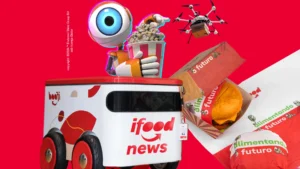Solution created at the University of São Paulo automatically cross-references data to support more effective decision-making against food insecurity
The Center for Artificial Intelligence (C4AI) at the University of São Paulo (USP) developed a tool that can help reduce the severity of hunger and food insecurity in the country — which, together, affect 136 million Brazilians, according to a survey carried out in 2020 by the Brazilian Research Network on Sovereignty and Food and Nutritional Security (Rede Penssan).
The solution of artificial intelligence created by Brazilian researchers is capable of identifying which regions of a given city lack infrastructure and adequate options for food supply. In this way, it shows public authorities, companies and NGOs where and how to act to make decisions that resolve or minimize hunger and food insecurity.
The solution, the result of an interdisciplinary project at USP that came to life in just 11 days, analyzes data from different databases so that it is possible to identify the most critical locations and carry out other types of analysis. The integration of different sources is a critical problem for a country as large as Brazil; at the same time, it is essential to find a solution.
“Now, with our solution that crosses information automatically, Artificial Intelligence presents the most critical locations and several other types of analysis,” he told USP Newspaper Alexandre Delbem, creator of the technology and professor at the Institute of Mathematical and Computer Sciences (ICMC) at USP, in São Carlos (SP), and researcher at C4AI.
He explains that technology can map different areas and adapt to many other types of information. This means that the AI solution created by USP adapts to the data and discovers on its own how the intersection can be done so that they complement each other and, thus, support decision-making. There is no need to even process this data. “Artificial intelligence interprets and presents results and predictions in reports, spreadsheets, graphs or maps”, explains Delbem.
The experience in São Paulo
This adaptability allows the solution to work with any type of data, and can also gather information about the climate and predict possible shortages. It can also facilitate communication between professionals from different areas who deal with the same subject. In other words, public managers can exchange information so that together they can think about actions to combat hunger.
“There is hunger due to lack of food, hunger due to quantity, hunger due to quality, hunger due to lack of access, lack of nutrients, hunger because there was no production that year. The information for each of these areas is in different banks. There are geographic, health and medical data and each of them represents a different world. Integration was a huge obstacle, but one that we are resolving”, said Antonio Mauro Saraiva, from the USP Polytechnic School and researcher at C4AI.
The proof of concept for this solution was carried out in São Paulo (SP) to identify the regions most prone to hunger. To do this, the AI used three data sources: the Brazilian Institute of Geography and Statistics (IBGE), the National Supply Company (Conab) and the food industry (establishments that sell food in the region).
To the UOL, Saraiva explained that there is a correlation between the number of open-air markets and the number of establishments that sell products in nature and the São Paulo Social Vulnerability Index, which identifies places where people who are on the margins of society predominate. “This way, public managers can be shown the situation in a given region and think about action plans and public policies,” he said.
The next step of the project is to expand the mapping to other locations and take the solution to public managers, NGOs and companies to seek solutions to this problem that affects 64% of our population. “Decision-making belongs to the government, and this needs to be done based on science and data,” said Saraiva.


